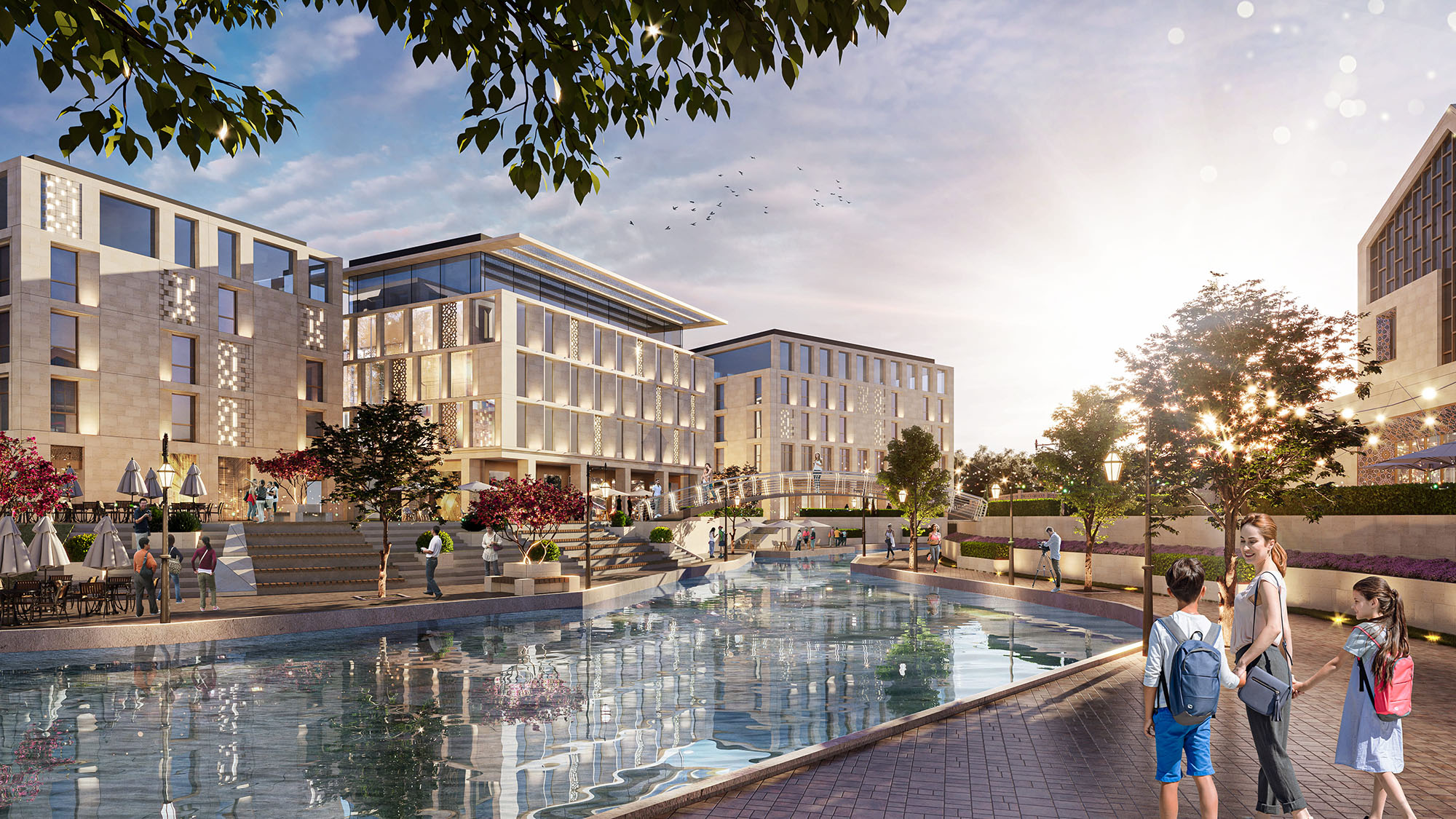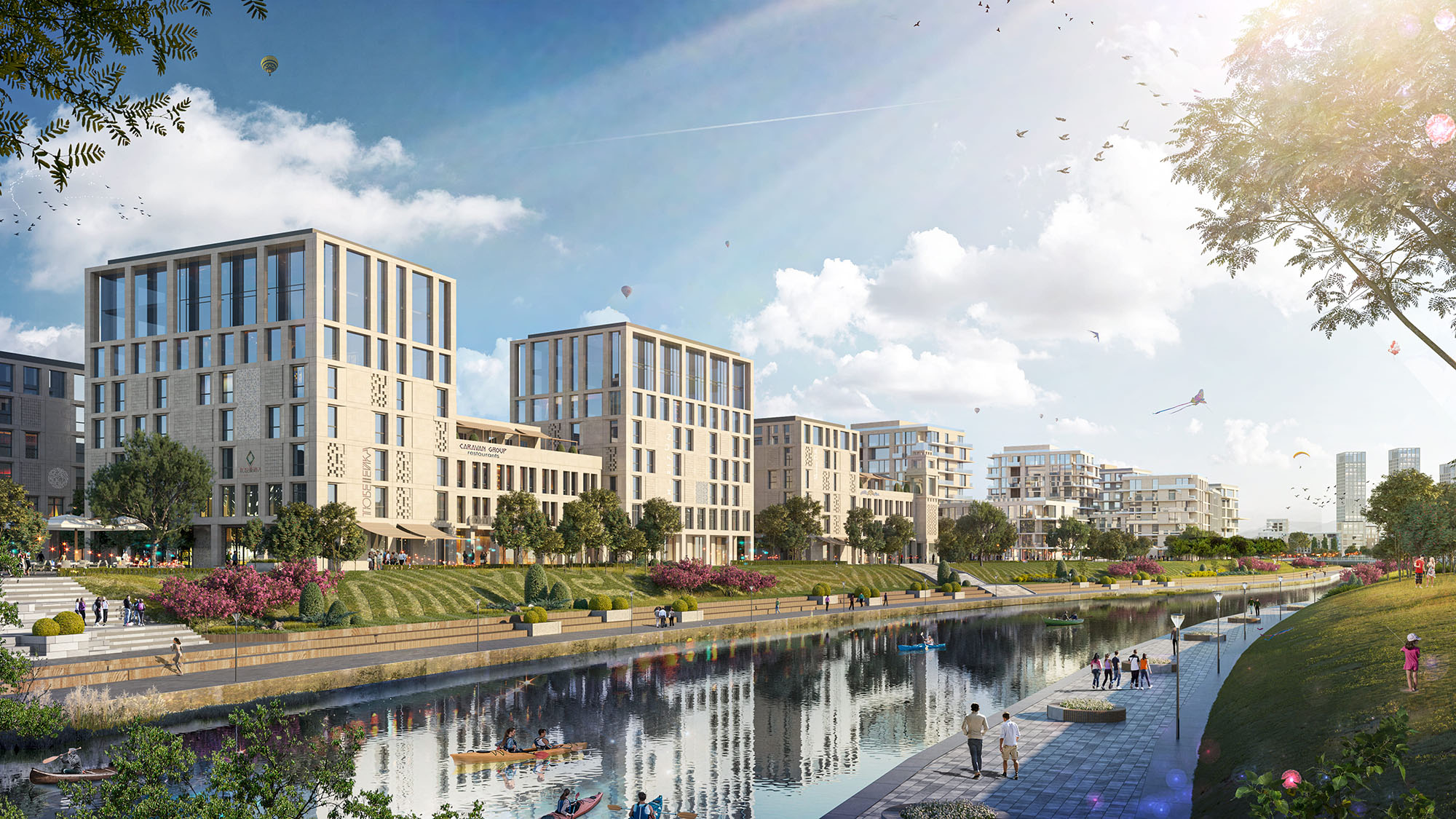Grand Chirchiq
Masterplan
Tashkent, Uzbekistan
The Chirchik River begins in the Tian Shan Mountains and carries its waters to Syrdarya. Settlements are drawn to it and line the river like precious stones. The gem of this necklace is Tashkent, one of the oldest and most modern cities in Central Asia. Here, along the river in the place of quarries, oases, canals, mahalla quarters, iconic objects, and a landscape full of symbolism will arise, providing an opportunity to cultivate a new generation of talents, entrepreneurs and the full realization of Tashkent's tourist potential. Cities whose largest transport hubs direct millions of guests to the provinces and regions such as Khiva, the Fergana Valley, Samarkand, and Bukhara. The fundamental goal of the master plan is to recreate the spirit of the ancient streets of Tashkent, with an abundance and variety of colors, paints, and mosaics of culture. The shapes of the quarters and winding shady roads, the reinterpretation of historical forms in architecture, and the introduction of folk art create a unique blend of modernity and antiquity, which are the gates to outstanding Central Asia. The Chirchik River will serve as the main pedestrian artery, starting from the Yangi Uzbekistan Park and flowing towards the new districts south of Tashkent. The existing eroded riverbed will be transformed into a natural green belt with ponds connected to the river through park arteries. This natural framework is inextricably intertwined with the urban one. Narrow commercial alleys, shady streets with chinar trees, central parks, boulevards with public transport, and bicycle infrastructure form a unique urban link. The network of streets and architecture is designed to contribute to the improvement of ecology and microclimate. For example, cities with chaotic grids are always cooler than traditional ones, and light finishing reflects the scorching sun rays. Water plays a crucial role in the city's culture, where the most abundant fountains are found. The aryk system is also introduced to maintain comfort for residents, a unique phenomenon with a three-thousand-year history. The water network will help cool the streets, water the trees, and become a source of pride for the inhabitants. Repeating the natural axis of the river, the main promenade connects the quarters named after the cities of the Great Silk Road. Also, the inspiration for residential districts was the mahalla structure, which contains centuries-old traditions, a culture of respect, and mutual assistance. This unique social phenomenon arouses lively interest in the world and is included in the preliminary list of UNESCO World Heritage. Each such small district will have its unique park that will embody the art formed in different regions of the country. In the handicrafts of the people of Uzbekistan, history, spirit, and a subtle philosophy of understanding are woven in.




